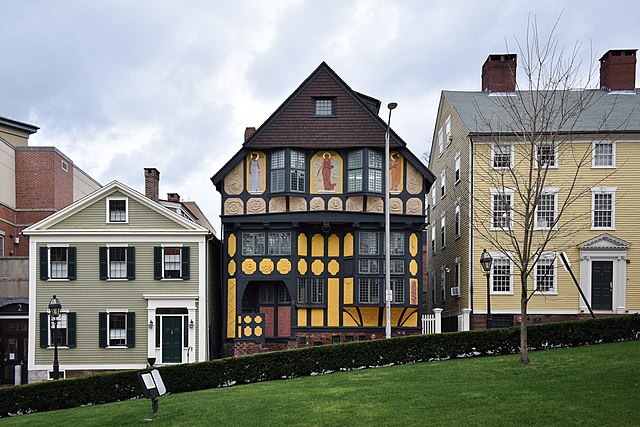Historic districts in the United States
Historic districts in the United States are designated historic districts recognizing a group of buildings, archaeological resources, or other properties as historically or architecturally significant. Buildings, structures, objects, and sites within a historic district are normally divided into two categories, contributing and non-contributing. Districts vary greatly in size and composition: a historic district could comprise an entire neighborhood with hundreds of buildings, or a smaller area with just one or a few resources.
Old City Historic District in Philadelphia
Charleston, South Carolina is home to the first historic district protected by local legislation in the United States
The Fleur-de-lys Studios is a contributing property to Providence's College Hill Historic District
The Dakota belongs to the Central Park West Historic District (a federally designated district) as well as the Upper West Side/Central Park West Historic District (a locally designated district).
In the law regulating historic districts in the United States, a contributing property or contributing resource is any building, object, or structure which adds to the historical integrity or architectural qualities that make the historic district significant. Government agencies, at the state, national, and local level in the United States, have differing definitions of what constitutes a contributing property but there are common characteristics. Local laws often regulate the changes that can be made to contributing structures within designated historic districts. The first local ordinances dealing with the alteration of buildings within historic districts was enacted in Charleston, South Carolina in 1931.
The Freedman's Bank Building, previously known as the Treasury Annex, is a contributing property to the Lafayette Square Historic District and Financial Historic District.
Plaque acknowledging Little Red Schoolhouse as a contributing property to Newberry Historic District in Newberry, Florida
This medical clinic building in the East Grove Street District in Bloomington, Illinois is an example of a non-contributing property.







